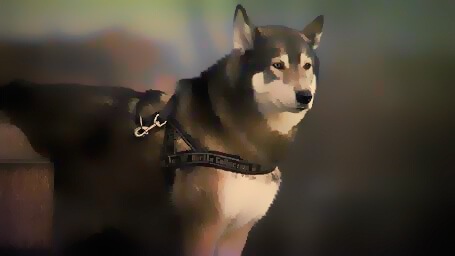
WHAT YOU NEED TO KNOW ABOUT A DOG HARNESS
ALWAYS CONSIDER THE DOG’S COMFORT FIRST
I never used a harness in my many years with my dogs. A leash attached to their collar is all I used on our walks. So many times on our early morning walks I’d watch my border collie strangle herself at the end of the leash trying to chase an animal or something else. As bad as that was, she didn’t stop when she reached the end of the leash and gagged herself because she wouldn’t give up.
I thought at the time that was normal and as she got older she would stop doing that, which she did. My beloved dog has since passed away and I rescued a young Catahoula ( a unique pitbull ). With her, I walked even earlier in the morning to avoid other dogs and people because she’s very aggressive with those she doesn’t know. Again she would strangle herself on the leash on the rare occasion we saw another dog or person as she would try to attack them.
These dogs are incredibly strong and though I’m a 6 foot 3, 235-pound weightlifter I could barely contain her as she strangled herself at the end of the leash. I then read how this action could be causing a lot of trauma to her neck region ( like with my border collie ). Then my sister came to the rescue, she had also rescued a pitbull from the same shelter two months earlier when she came over to my house with her dog in a harness. She told me the harness saved her because without it she couldn’t handle her dog.
Going to Amazon I thought I’d give a harness a try and purchased a heavy-duty one for Pitbulls. It was the best move I’ve ever made concerning my dogs and the walks are much more pleasant now. I’ve learned a lot about a dog harness and the best ways to use them. The following is what I’ve learned.
OBVIOUS CONSIDERATIONS WHEN GETTING A HARNESS FOR YOUR DOG
Durability and safety. How do you adjust the fit? Will it hold up to extensive use and stress?
How comfortable is the harness? Is your dog comfortable in it? Does it have any edges digging into the dog and can it be adjusted enough if it gets loose or your dog grows?
How does it look? While of course function is the priority there is no reason your dog can’t look good in his/her harness and reflectors could possible be life-saving.
DOG HARNESS 101
Always consider a dog harness that makes walks, and other trips with your dog easy while keeping them comfortable, secure, and pain-free. There is a harness for every size, weight, needs, and abilities. An example could be for leash pulling, a no-pull harness with a front clip is probably your best choice.
A harness is usually used for two reasons, to walk or run with your dog or take them for a ride in the car. Always remember that these outings aren’t just for physical and mental health; for many, it is the only time they have an opportunity to explore the world outside of their home.
Of course, you still need a collar for your dog’s license but that where the use of a collar should stop. For anything else where control of the dog is needed always use a harness because even the softest collar can cause choking and neck trauma.
BE CAREFUL WITH YOUR DOG’S NECK
According to Dr. Carlo Siracusa, DVM, associated professor of clinical animal behavior and welfare at the University of Pennsylvania School of Veterinary Medicine, don’t use anything that puts too much pressure on the neck. “Pressure to the neck can cause problems to the trachea and to the bone structure of the neck, itself. ” There are studies that even suggest that too much pressure on the neck can cause eye problems, including glaucoma.
FINDING THE RIGHT HARNESS
You would think it would be easy to select a harness but there’s more to it than you think. A style that works great on a 4-pound Chihuahua may be a terrible fit for a long-legged, barrel-chested Great Dane. Nor does finding the right harness depend solely on fit. The best harness for your dog is the one that makes walks and other trips easy while keeping them comfortable, secure, and pain-free. Dogs that pull on the leash, for example, need something different than older or injured dogs with limited mobility.
TYPES OF DOG HARNESS
Dog harnesses generally fall into three major categories:
Front clip: A harness that clips to a leash at the front of the chest is anti-pull. They slow your dog down by putting your control ahead of them instead of at their back.
Back clip: A harness that clips to a leash at the back is for dogs that don’t pull, no matter whether they’re super-active or couch potatoes.
Front and back clip: These harnesses have both options, providing versatility for dogs and people whose needs change over time.


